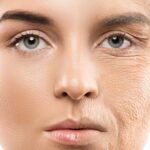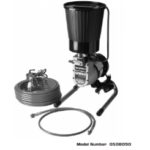A migraine is a neurological condition that causes intense pain, sensitivity to light, and other disruptive symptoms. While medication can help manage episodes, adopting certain lifestyle changes can significantly reduce how often severe headaches occur. Here’s more information on lifestyle modifications to reduce migraines.
Migraine Triggers
Recognizing your personal migraine triggers is the first step toward effective prevention. Common triggers include:
- Hormonal changes during menstrual cycles or menopause.
- High stress levels or sudden stress relief.
- Alcohol consumption.
- Caffeine withdrawal or excessive caffeine intake.
- Strong smells, bright lights, or loud sounds.
- Sleep disruptions, both too little and too much sleep.
- Weather changes.
- Certain foods, like chocolate, aged cheese, and processed meats.
Keeping a headache journal helps identify your triggers. Track when severe headaches occur, what you ate, your sleep patterns, stress levels, and environmental factors.
Nutrition and Hydration Habits
Proper nutrition and hydration play key roles in migraine prevention. Dehydration is a common trigger, making consistent water intake fundamental for prevention. Aim for eight glasses of water daily, and increase this amount during hot weather or physical activity. Regular meal timing helps stabilize blood sugar levels. Skipping meals often leads to throbbing head pain, so eating balanced meals maintains steady energy levels. Focus on whole foods, including lean proteins, complex carbohydrates, and fresh fruits and vegetables.
Role of Sleep and Exercise
Lifestyle factors work together to create a strong foundation for migraine prevention. There are three key components that can help, and they are:
- Sleep consistency: Maintaining regular sleep and wake times, even on weekends, helps regulate your body’s natural rhythms and reduces the risk of severe headaches.
- Regular exercise: Moderate aerobic activity, such as walking, swimming, or cycling, on most days, can reduce frequency and severity.
- Stress management techniques: Practices such as deep breathing exercises, meditation, or yoga help manage stress levels that often trigger severe headache episodes.
Quality sleep requires creating an environment conducive to rest. Keep your bedroom cool, dark, and quiet. Limit screen time before bed, as blue light can interfere with natural sleep patterns. For exercise, start slowly if you’re not currently active, and gradually increase intensity to avoid triggering exercise-induced migraines.
Lifestyle Practices That Are Migraine-Friendly
Environmental modifications can significantly impact migraine frequency. Bright fluorescent lights often trigger episodes; contemplate using softer lighting at home and work. Sunglasses help when outdoors, and requesting accommodations, such as a desk away from harsh lighting, can make workplace environments more manageable.
Temperature regulation matters for many migraine sufferers. Extreme heat or cold can trigger episodes. Dressing in layers and maintaining comfortable indoor temperatures helps prevent these triggers. Strong scents from perfumes, cleaning products, or cooking can also spark migraines in sensitive individuals.
Creating consistent daily routines reduces the likelihood of encountering unexpected triggers. This includes regular meal times, consistent sleep schedules, and planned relaxation periods. While complete trigger avoidance isn’t always possible, reducing exposure through environmental awareness makes a meaningful difference in migraine management.
Schedule Your Migraine Consultation Today
Lifestyle modifications are great tools for reducing the frequency of severe headaches and improving well-being. Understanding your personal triggers, maintaining proper nutrition and hydration, and creating migraine-friendly environments work together to form comprehensive prevention strategies. If you continue experiencing frequent severe headaches despite lifestyle modifications, contact a trusted healthcare provider near you to schedule your migraine consultation today.











